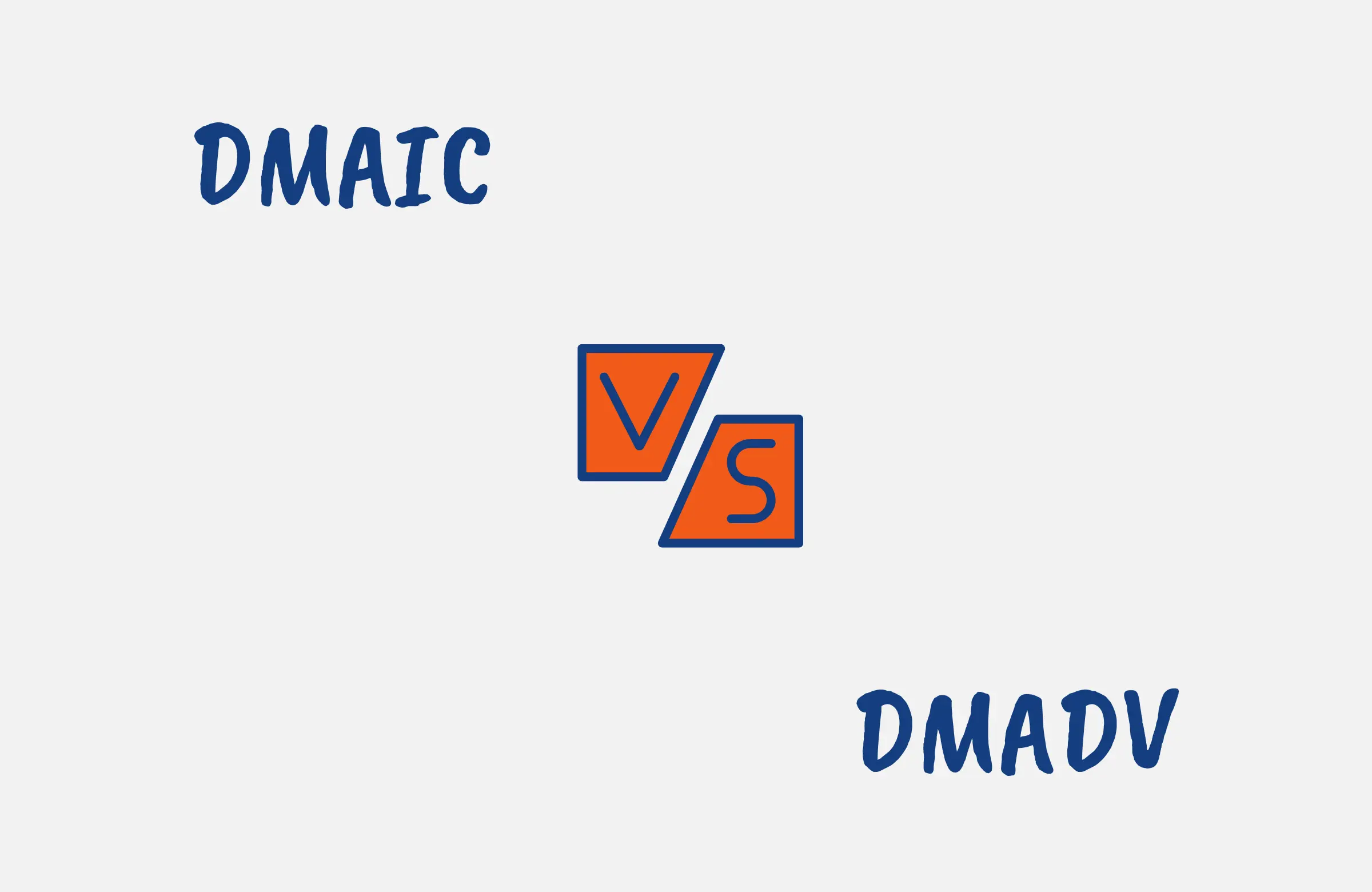DMAIC and DMADV are two process improvement approaches in Six Sigma. As a Six Sigma practitioner, understanding the difference between them is key to knowing which approach to use for any situation.
Whether you need to improve an existing process or design a new one from scratch, DMAIC and DMADV provide proven frameworks to boost quality and efficiency.
In this post, we compare DMAIC vs DMADV looking into their phases and differences, as well as the ideal situations to use either of them to drive major improvements.
Difference Between DMAIC and DMADV
While the DMAIC and DMADV models in Six Sigma are all about process improvement and excellence, they do this in different ways.
On one hand, DMAIC is all about process improvement and aims to improve processes that already exist.
DMADV on the other is all about process excellence and is used when there are no existing processes or designs and a new process or design has to be developed from scratch.
What is DMAIC Process in Six Sigma?
DMAIC is an acronym that stands for Define, Measure, Analyze, Improve, and Control. It refers to a data-driven improvement cycle used for improving, optimizing, and stabilizing existing processes and designs.
It provides a structured framework for identifying the root causes of defects and variations within a process, developing solutions, and implementing controls.
The DMAIC methodology is core to Six Sigma and provides a data-driven approach to improve any existing process to meet customer requirements.
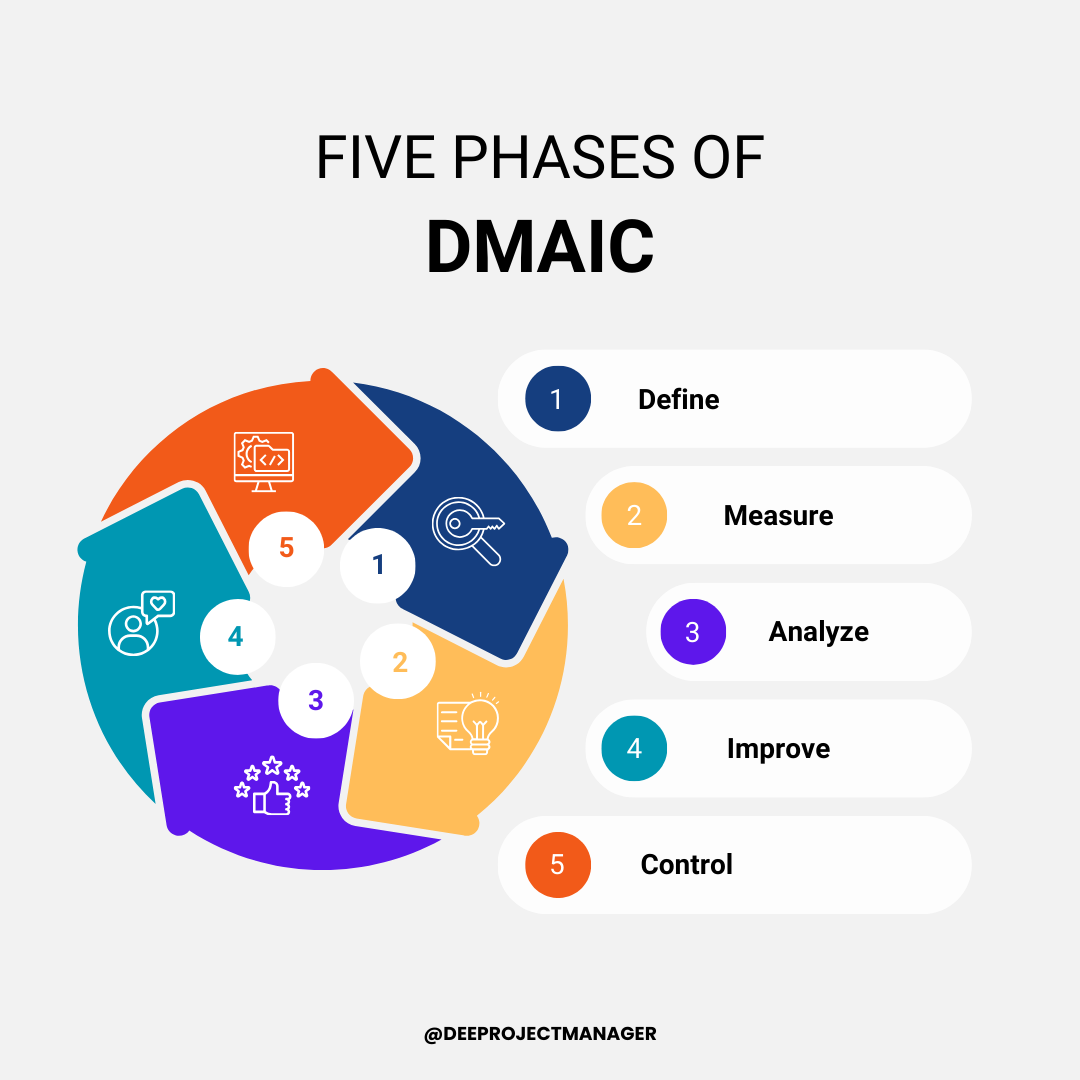
Phases of DMAIC
The five phases of DMAIC are:
- Define the goals, objectives, and scope of the improvement project. Identify the process and define the requirements of customers.
- Measure current performance. Collect relevant data and metrics to understand the current state of the process.
- Analyze the data to identify the root causes of defects and variations. Determine the vital few factors causing the defects using analytical tools.
- Improve the process by addressing root causes. Generate solutions through techniques like the design of experiments. Implement the solutions to eliminate defects.
- Control the improved process and confirm solutions. Develop monitoring, control, and reaction plans to hold the gains.
What is DMADV in Six Sigma?
DMADV is an acronym for Define, Measure, Analyze, Design, and Verify. It is a structured and disciplined approach to introducing new products, processes, or services that meet the needs of the customer.
While DMAIC aims to improve existing processes, DMADV is used when there are no existing processes or designs and a new process or design has to be developed from scratch.
It provides a systematic approach to designing innovative designs, products, processes, or services right the first time to fulfill Six Sigma quality levels and customer requirements.
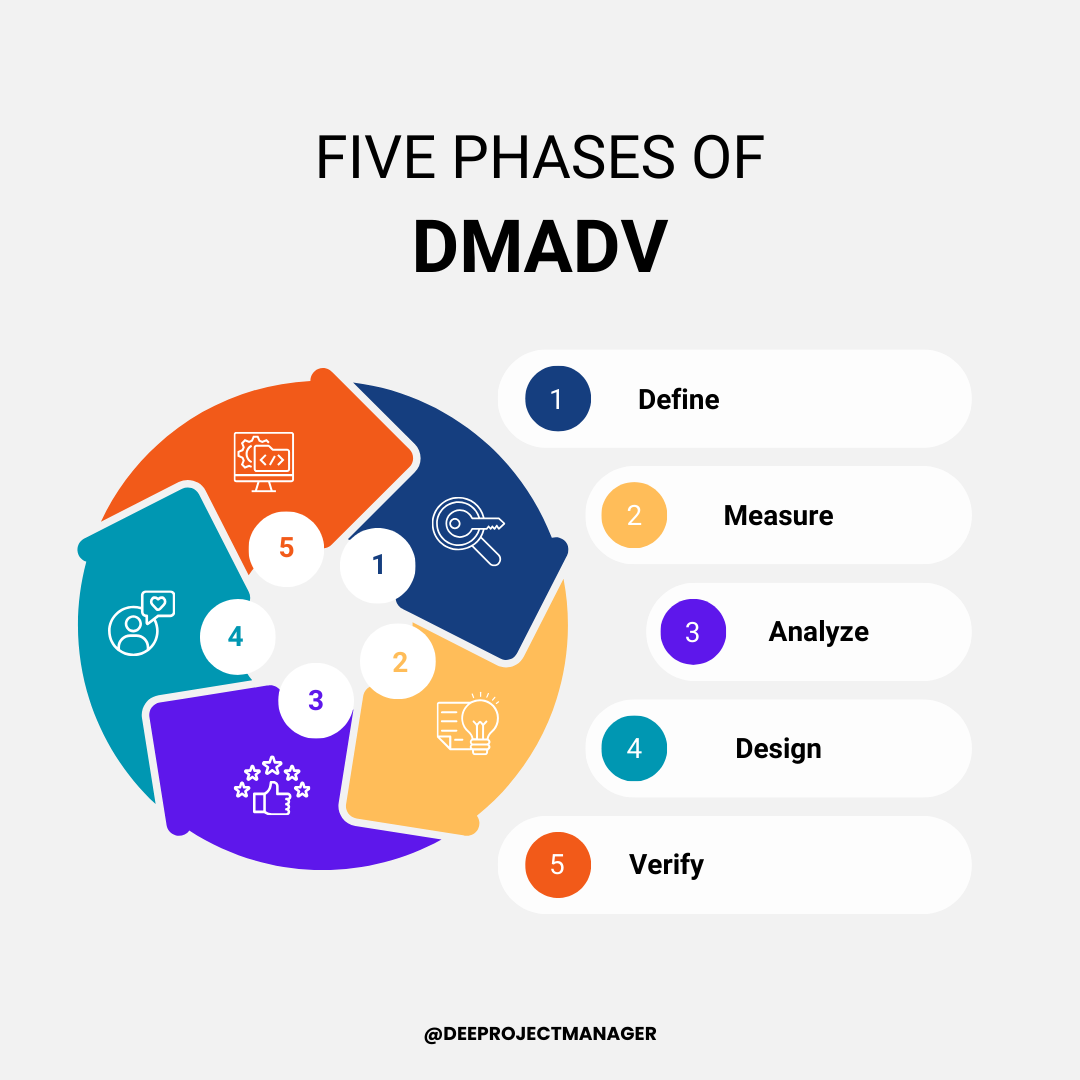
Phases of DMADV
The five phases of DMADV are:
- Define design goals that are consistent with customer demands and the enterprise strategy. Outline the project objectives, requirements, and scope.
- Measure and identify critical characteristics that are important to the customer. Gather Voice of Customer data through surveys or interviews.
- Analyze to develop alternative process designs that meet customer needs. Assess design alternatives and select the best design.
- Design the selected product, process, or service design in more detail. Develop process maps, a quality plan, failure mode analysis, and control plans.
- Verify the design, set up pilot runs, implement the production process, and hand it over to the process owner.
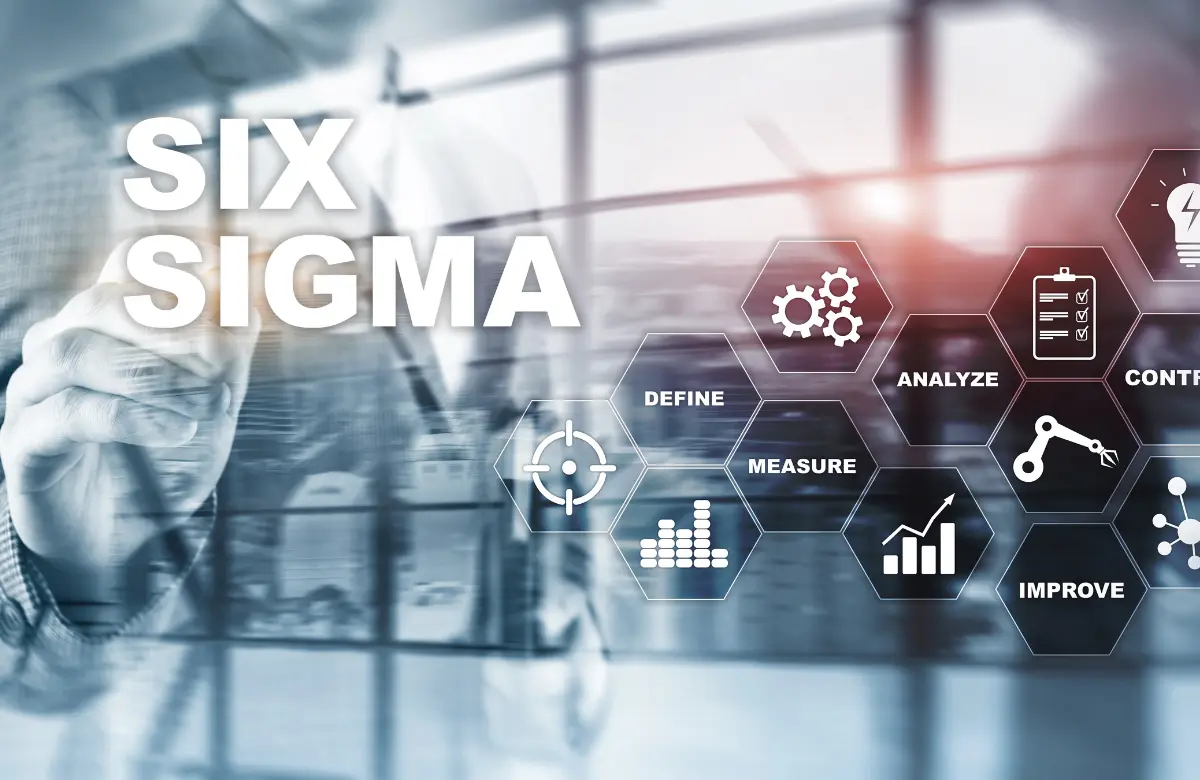
DMAIC vs DMADV Comparison
Now let’s go into a head-to-head comparison of DMAIC vs DMADV to fully understand which approach is right for your business process needs.
- Existing vs New Processes: DMAIC aims to improve existing processes while DMADV is used to create new products, processes, or service designs.
- Objective: The goal of DMAIC is to incrementally improve by reducing variation and defects. DMADV’s objective on the other hand is to design with Six Sigma quality from the start.
- Data Focus: While DMAIC relies on data about an existing process, DMADV focuses on gathering Voice of Customer data to design as per requirements.
- Tools Used: DMAIC uses statistical tools and analysis of existing data. DMADV uses quality tools like FMEA for a new design.
- Timeframe: DMAIC projects are usually shorter term while DMADV requires more time for designing solutions from scratch.
- Team: DMAIC teams usually have knowledge of the existing process while DMADV teams start from a clean slate.
- Mindset: The DMAIC mindset is on improving an existing process. DMADV requires an innovative mindset to design new products.
- Control Factors: DMAIC implements control systems for existing processes. DMADV verifies and validates the design itself.
- Analytical Intensity: DMAIC relies heavily on the analysis of data and statistics. DMADV focuses on synthesis and design.
- Risks: DMAIC has lower risks as it works on known processes while DMADV projects carry a higher risk of failure.
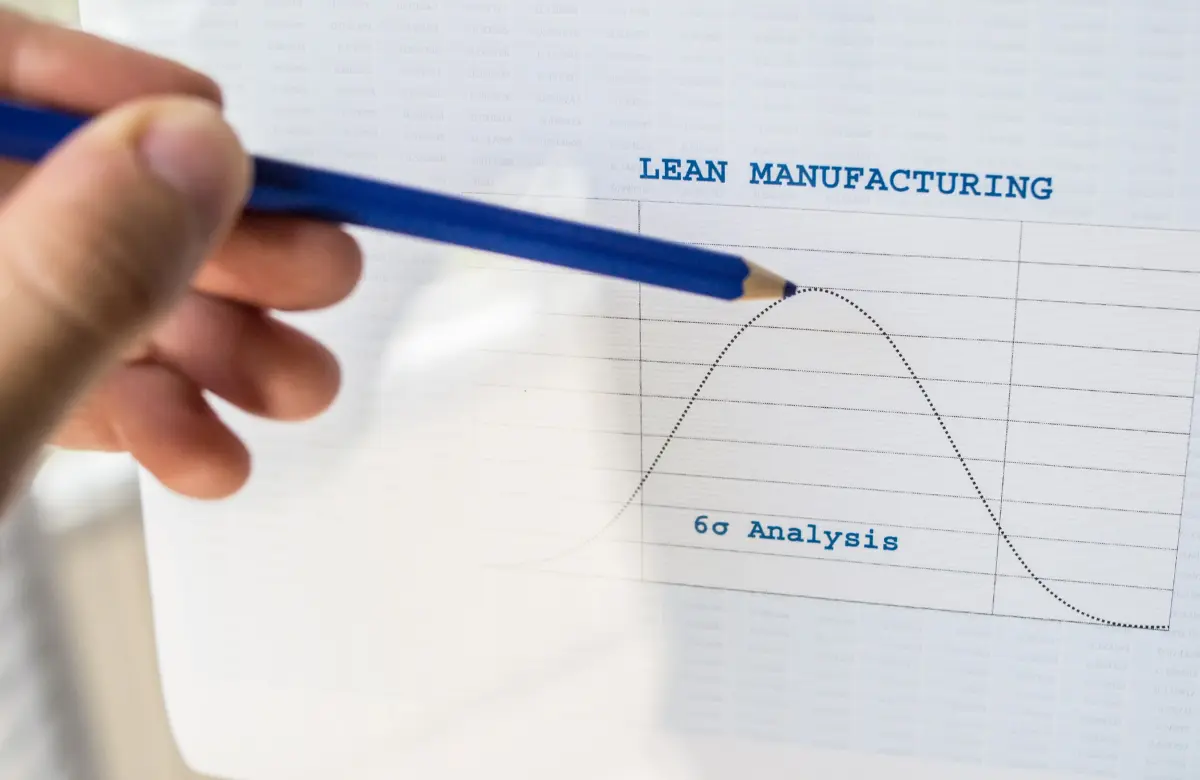
Similarities Between DMAIC and DMADV
Despite the aforementioned differences between DMAIC and DMADV, keep in mind that they share the same Six Sigma principles and tools.
Understanding their similarities will help you be more agile in selecting the right approach for your needs.
- Both use a structured, data-driven approach to achieve significant improvement.
- The first three phases – Define, Measure, Analyze are the same in DMAIC and DMADV.
- They both rely on facts, data, and statistical analysis rather than assumptions and guesswork.
- Each methodology utilizes Six Sigma concepts and tools for driving process improvements.
- DMAIC and DMADV projects require clear problem statements, project charters, quality plans, and risk assessment.
- They focus on achieving measurable financial benefits and aligning improvements to strategic business objectives.
- Both methodologies utilize tools like process mapping, root cause analysis, failure mode analysis, and experiment design.
- DMAIC and DMADV drive customer-focused solutions based on critical quality factors and customer requirements.
- They build control and monitoring systems to sustain improvements over time.
- The rigorous project execution steps ensure disciplined management and execution.
- Training and certification levels like Green Belt and Black Belt are common across both methodologies.
- Project tollgates, reviews, and resources ensure success for DMAIC and DMADV projects.
- Effective team formation, including roles like Champion, and Process Owner, is critical in both approaches.

When to Use DMAIC vs DMADV
Having covered what DMAIC and DMADV entail as well as their differences, we look at ideal situations to use DMAIC vs DMADV.
When Should DMAIC Be Used?
DMAIC is the recommended methodology when you want to improve existing processes and reduce defects. Its data-driven approach will help you systematically optimize and stabilize ongoing performance.
Some examples of when to use DMAIC include:
- There is an existing process that is stable but does not meet customer requirements or business goals.
- Current process performance shows high defect rates that require reduction.
- Incremental improvement is needed in process metrics like cycle time, yield, and productivity.
- The existing process needs optimization due to changing customer expectations or external factors.
- Reduction in process variability and defects will result in significant cost savings.
- The process has existed for some time, and data is available for analysis.
- Root causes for poor process performance have not been identified or addressed.
- Sustainable improvement will require systems of control and monitoring.
When Should DMADV Be Used?
DMADV is the recommended methodology when you need to design new processes, products, or services with Six Sigma-level quality. Some examples of when to use DMADV include:
- A new process, product, or service needs to be designed where none exists currently.
- The current process or product design is unable to meet customer requirements.
- A process redesign or innovation is needed to achieve strategic business goals.
- The product or process concept is new and there are no internal benchmarks.
- Voice of the customer data shows unmet needs requiring new designs.
- New technologies, capabilities, or methodologies need to be incorporated.
- Design risks and failure modes need to be understood and mitigated.
- Meeting customer needs will require an innovative, game-changing solution.
- Future sustainability requires building quality into product/process DNA.
Conclusion
Six Sigma provides proven approaches to drive meaningful improvements whether you are looking to improve an existing process or design a new one.
While DMAIC offers a data-driven approach to optimize and stabilize existing processes, DMADV enables you to design truly innovative products, services, and processes with quality built in.
Despite their differences in application, they both rely on structured execution and statistical analysis to deliver phenomenal results.
With this guide on DMAIC vs DMADV, you should have an essential grasp of how to systematically improve your business processes as a Six Sigma practitioner.
FAQs
DMAIC and DMADV are Methodologies Of?
DMAIC and DMADV are methodologies of Six Sigma, aimed at improving business processes through data-driven analysis and strategic improvements.
Is DMAIC the Same as Kaizen?
DMAIC is not the same as Kaizen. DMAIC is a structured Six Sigma methodology for process improvement, while Kaizen is a continuous, incremental improvement philosophy from Japanese management practices.
Six Sigma DMAIC Approach Can be Used For?
The Six Sigma DMAIC approach is used for improving, optimizing, and stabilizing business processes and designs to increase efficiency and reduce variability.
DMAIC Model is Similar to Which Other Old Models?
The DMAIC model is similar to other quality improvement models like the PDCA (Plan-Do-Check-Act) cycle, also known as the Deming Cycle.

